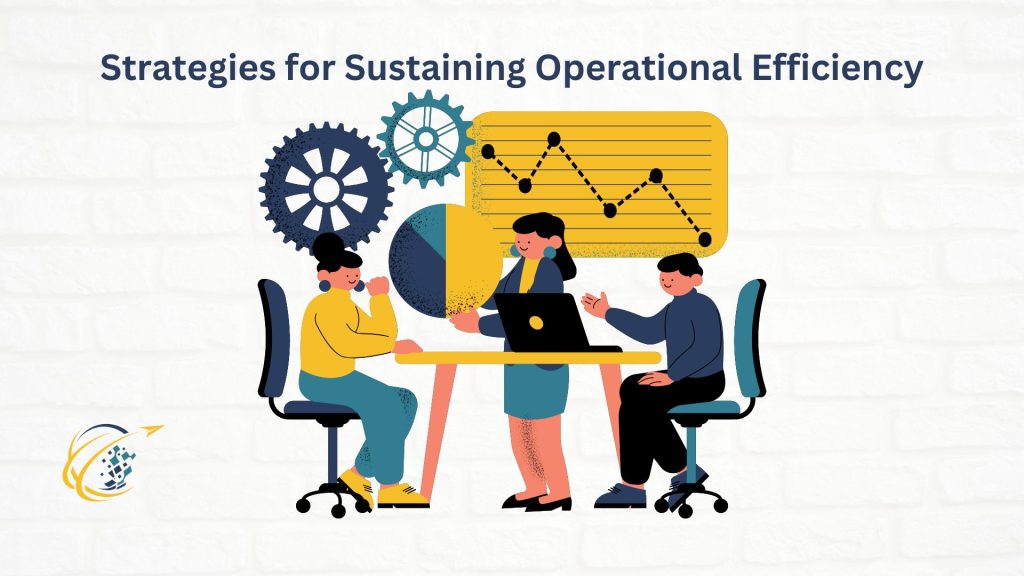Employing effective strategies for sustaining operational efficiency is crucial for a business’ long-term success. Operational efficiency ensures that resources, both human and material, are utilized in the most productive way possible. By optimizing processes, businesses can reduce waste, enhance productivity, and improve customer satisfaction. The challenge lies not just in achieving efficiency, but in sustaining it over time, as market conditions and customer expectations continually evolve. Companies that consistently apply strategies for sustaining operational efficiency maintain a competitive edge.
Understanding the Importance of Operational Efficiency
Operational efficiency refers to the ability of a company to deliver products or services in the most cost-effective manner while maintaining high quality. It involves optimizing internal processes, reducing unnecessary costs, and ensuring that every aspect of the business contributes to its overall goals. When businesses achieve operational efficiency, they can scale faster, react more swiftly to market changes, and increase profitability.
However, operational efficiency isn’t a one-time effort. Businesses must continuously seek ways to improve processes and adapt to new challenges. This requires monitoring key performance indicators (KPIs), engaging employees, and investing in technology that enables automation and streamlines workflows. Thus, strategies for sustaining operational efficiency should be part of a company’s ongoing efforts to remain competitive and responsive to changes in their industry.
Continuous Improvement Processes
One of the core strategies for sustaining operational efficiency is to adopt continuous improvement models. This approach ensures that businesses do not become stagnant. Instead, they regularly assess and refine their processes to adapt to new demands. Lean methodology, for instance, focuses on reducing waste and improving workflow efficiency. Six Sigma emphasizes minimizing defects and improving quality, while Agile promotes adaptability and responsiveness. These frameworks empower companies to consistently monitor and optimize their operations.
Through continuous improvement, businesses can better identify bottlenecks and inefficiencies. Regular audits and feedback loops play an important role in this process. By fostering a culture of improvement, employees at every level become part of the solution. They are encouraged to suggest changes and improvements, leading to innovation and a more engaged workforce.
Investing in Technology and Automation
Technology has become one of the primary drivers of operational efficiency. Incorporating technology into everyday processes can significantly enhance productivity. Businesses that invest in automation can streamline routine tasks, reduce errors, and free up employee time for higher-value activities. For example, automation software can handle data entry, customer inquiries, and even inventory management. In doing so, businesses can reduce the labor-intensive aspects of their operations.
In addition, utilizing data analytics and artificial intelligence (AI) can help companies predict trends, optimize supply chains, and make more informed decisions. AI can also assist in resource planning and forecasting demand, which improves operational efficiency. By embracing new technologies, companies create a more agile environment capable of sustaining operational efficiency over the long term.
Employee Engagement and Training
Human resources are one of the most valuable assets in any organization. However, sustaining operational efficiency requires more than just automating processes and cutting costs. Employees need to be actively engaged and well-trained to maintain efficiency. Proper training ensures that staff understand their roles and can execute their tasks effectively. Furthermore, engaged employees are more likely to go beyond their basic duties and contribute to overall productivity.
Effective communication between leadership and employees is essential. When teams understand the company’s goals and how their work contributes to achieving them, they are more motivated to perform efficiently. Regular performance reviews, open feedback channels, and recognition programs can enhance employee satisfaction and drive better results. Therefore, investing in staff training and fostering a positive work environment are crucial strategies for sustaining operational efficiency.
Streamlining Supply Chains and Inventory Management
A well-optimized supply chain is vital for maintaining operational efficiency, especially for product-based businesses. Inefficient supply chains can lead to delays, increased costs, and missed opportunities. By regularly evaluating supply chain performance, businesses can identify areas for improvement, such as vendor relationships, logistics, and procurement processes.
Implementing advanced inventory management systems can also help companies avoid overstocking or understocking, both of which can hurt profitability. Real-time tracking and inventory automation enable companies to better manage their stock levels, which reduces the costs associated with excess inventory or stockouts. With a more efficient supply chain and inventory system, businesses can deliver products to customers faster and more cost-effectively.
Measuring and Monitoring Key Performance Indicators (KPIs)
For businesses looking to sustain operational efficiency, it is critical to track and measure performance. KPIs provide a clear picture of whether or not the business is meeting its operational goals. Common KPIs include cost per unit, production time, defect rates, and employee productivity. By regularly monitoring these metrics, businesses can quickly identify areas of inefficiency and take corrective action.
Moreover, data-driven insights allow businesses to make more informed decisions. For example, if a company notices that production costs are rising, it can investigate the cause and implement cost-saving measures. Data analytics tools make it easier for businesses to analyze trends and adjust their strategies to sustain efficiency.
Adapting to Changing Market Conditions
The business landscape is always evolving, and companies that fail to adapt will struggle to sustain operational efficiency. External factors such as market volatility, economic downturns, or supply chain disruptions can significantly impact operations. Thus, businesses must remain flexible and be ready to adjust their strategies in response to new challenges.
One way to build resilience is to diversify suppliers and create contingency plans. By preparing for potential disruptions, businesses can reduce the impact of unforeseen events on their operations. Regularly reviewing and updating operational processes based on market trends ensures that the company remains efficient and competitive in a dynamic environment.
Sustaining operational efficiency requires a proactive and multifaceted approach. By implementing continuous improvement models, investing in technology, engaging employees, and streamlining supply chains, businesses can build long-term efficiency. Regularly monitoring KPIs and remaining adaptable to market changes also ensures that operations run smoothly. With these strategies for sustaining operational efficiency, companies can improve profitability, reduce waste, and stay ahead of the competition in a constantly evolving market.


